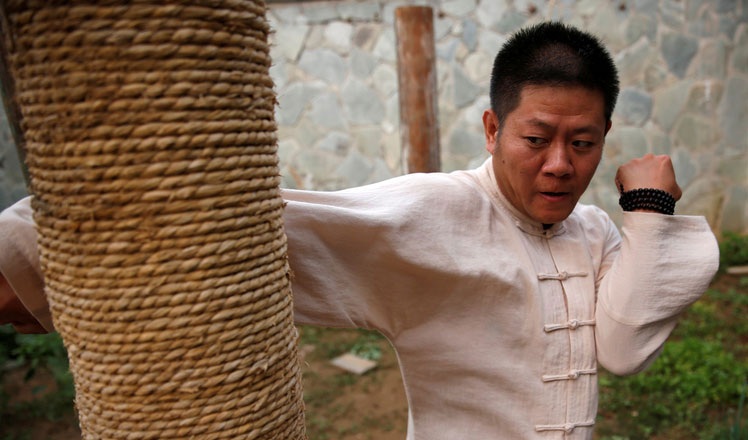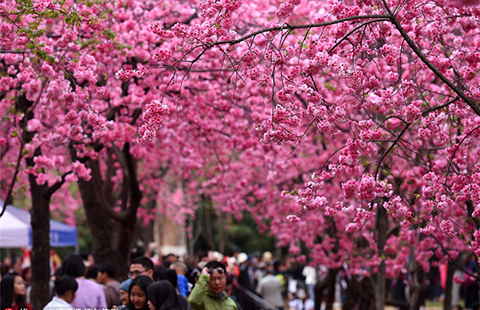Spaceflight redefines 'Made in China' tag
Updated: 2016-10-28 07:55
By Cheng Yingqi in Beijing and Liu Ce in Shenyang(China Daily)
|
||||||||
Shenzhou XI voyage highlights the nation's recent technological development
Since China emerged as an industrial powerhouse three decades ago, the nation's critics have defined "Made in China" as a synonym for poor quality. Today, the picture is changing, thanks to ever-rising investment into scientific and technological research.The latest case in point is the Shenzhou XI manned spacecraft which blasted off on Oct 17.
Covered by independent intellectual property rights, the research and development of the spaceship and peripheral technologies involved technology companies nationwide, which were able to upgrade and redesign their products as a result.
The China Electronics Technology Group made the solar panels that provide power for Shenzhou XI, and the company is now hoping to expand its patented battery technology to the civil sector.
Shenzhou XI is fully powered by eight solar panels covering a total area of 24 square meters. The panels store energy efficiently as the spaceship travels on the sun side, and the batteries release that energy when it flies into the night side.
"The solar panels most frequently used on Earth are silicon batteries, but in space we use gallium arsenide batteries, which are much more expensive. Now, we are adopting new measures to lower the cost in order to expand the use of gallium arsenide batteries in civil products," Zhou Chunlin, the company's deputy chief engineer, said.
In some cases, companies invest in aerospace technology that cannot be readily commercialized.
The Shenyang No 4 Rubber Co has a team of 10 to 15 people in charge of developing rubber components for the Shenzhou XI spaceship.
"Although we cannot yet apply the technology to civil products, the accumulated technology will surely help to improve the quality of our other products," said Dong Guifen, a senior engineer at the company.
Shenyang No 4's related, nonmilitary products are used on China's high-speed trains and are also exported to countries in the European Union and Southeast Asia.
Wu Ping, deputy director and spokeswoman of the China Manned Space Agency, said the ability to conduct manned space flight indicates the level of a country's scientific and technological development and comprehensive national strength.
"Manned space flight is a driving force behind economic development, especially in the high-tech industry," Wu told a media briefing in September, adding that the economic input-output ratio of manned space technology is between 1:10 and 1:12.
In the past two decades, more than 2,000 different space technologies have been used across all sectors of national economic construction, including sectors such as raw materials, microelectronics, machine manufacturing, chemicals, metallurgy, textiles and information technology.

- Father and son express gratitude by traveling to 200 Chinese cities
- Wife raises funds to search for missing sailor
- Two-child policy working, birthrate figures show
- China promotes transfer of farmland use right
- Hefty award offered for deciphering oracle bone characters
- China Daily brings you 'sixth plenums' in past 35 years
- EU, Canada sign landmark deals to enhance economic, political partnership
- Wife raises funds to search for missing sailor
- Clinton's edge ebbs after FBI's announcement of new email review: poll
- Asia American leaders discuss civic engagement
- World's disabled get new champion
- Clinton, Michelle Obama make first joint campaign appearance

 The World in photos: from Oct 24 to Oct 30
The World in photos: from Oct 24 to Oct 30
 Through the lens: The life of a kung fu master
Through the lens: The life of a kung fu master
 In pics: Top 10 Chinese cities in 2016
In pics: Top 10 Chinese cities in 2016
 A sprinkling of snow in China's northern part
A sprinkling of snow in China's northern part
 In pics: School uniforms get chic look
In pics: School uniforms get chic look
 China-Russia Internet Media Forum opens in Guangzhou
China-Russia Internet Media Forum opens in Guangzhou
 2016 Comedy Wildlife Photography Awards Finalists
2016 Comedy Wildlife Photography Awards Finalists
 NINED VR creates splash with virtual reality products
NINED VR creates splash with virtual reality products
Most Viewed
Editor's Picks

|

|

|

|

|

|
Today's Top News
'Zero Hunger Run' held in Rome
Trump outlines anti-terror plan, proposing extreme vetting for immigrants
Phelps puts spotlight on cupping
US launches airstrikes against IS targets in Libya's Sirte
Ministry slams US-Korean THAAD deployment
Two police officers shot at protest in Dallas
Abe's blame game reveals his policies failing to get results
Ending wildlife trafficking must be policy priority in Asia
US Weekly

|

|







